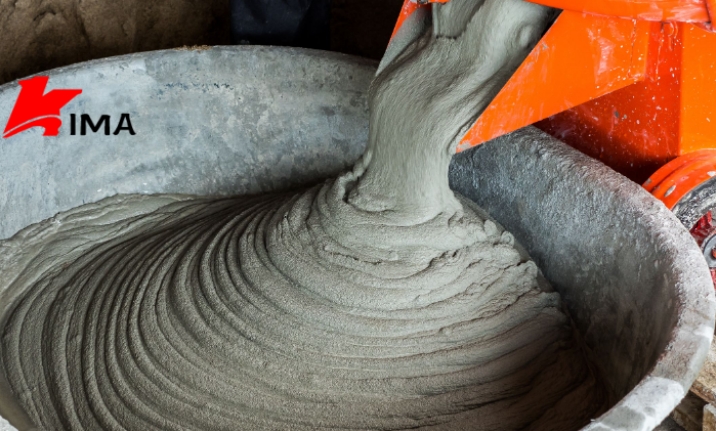HPMC (Hydroxypropyl Methyl Cellulose) and HEMC (Hydroxyethyl Methyl Cellulose) are commonly used cellulose ether compounds that are widely used in modern building materials, especially in dry-mix mortars and cement-based materials. . Their main function is to improve construction performance, improve the water retention and fluidity of cement, and have a significant impact on the hydration process of cement.

1. Mechanism of action of HPMC and HEMC
HPMC and HEMC exhibit good solubility and viscosity regulation in cement-based materials through hydrophilic groups in their molecular structure. The hydroxyl and ether bonds on its molecular chain can form hydrogen bonds with water molecules to enhance the water retention performance of the material. In addition, since HPMC and HEMC can form a thin film on the surface of cement, it can produce lubrication between cement particles and reduce friction, thus improving the fluidity of cement slurry. This film can also limit the rapid evaporation of water, allowing the cement particles to continue to hydrate in a moderately humid environment.
The main mechanisms of action of HPMC and HEMC include the following:
Water retention: Through the water retention of cellulose ether in the slurry, the hydration reaction of cement is delayed, making the cement hydration process more uniform. Cellulose ether can evenly distribute moisture in the slurry, avoiding cracking problems caused by surface dryness.
Delay the hydration reaction: Cellulose ether forms a thin film on the surface of cement, which can delay the hydration rate of cement particles and make the strength development of cement more stable. This retardation effect of HPMC and HEMC is especially obvious in the early hydration stage, allowing the cement slurry to maintain a certain fluidity for a longer period of time.
Thickening and flow adjustment: HPMC and HEMC can significantly increase the viscosity of cement pastes, making them easier to apply. Through thickening, these additives prevent slurry sagging and delamination, improving application uniformity and surface quality.
2. Factors affecting cement hydration by HPMC and HEMC
The effect of HPMC and HEMC on cement hydration is affected by many factors, including dosage, solubility, and molecular weight.
Dosage: The content of HPMC and HEMC has a significant impact on the hydration process of cement paste. An appropriate amount of cellulose ether can effectively improve the water retention and adhesion of cement slurry, but too much will significantly extend the hydration time and affect early strength development. Therefore, the dosage of cellulose ether should be reasonably controlled according to specific construction needs.
Molecular weight: HPMC and HEMC with different molecular weights have different dissolution rates and viscosity effects in cement-based materials. Generally speaking, higher molecular weight cellulose ethers provide higher water retention and viscosity, but may also delay hydration. Therefore, in practical applications, the appropriate molecular weight grade should be selected according to engineering needs.
Solubility and dissolution rate: The solubility and dissolution rate of HPMC and HEMC directly affect their distribution and water retention effect in cement paste. Cellulose ethers with a slow dissolving speed may cause uneven water retention of the slurry during the construction process. Therefore, in practical applications, cellulose ethers with a moderate dissolving speed should be selected as much as possible.

3. Application of HPMC and HEMC in cement-based materials
The main application areas of HPMC and HEMC include interior and exterior wall putty, tile adhesive, floor leveling materials and waterproofing materials. This type of cellulose ether not only improves the construction performance of the material by regulating the hydration process of the cement-based material, but also plays an important role in the surface smoothness, crack resistance and durability of the finished product.
Interior and exterior wall putty: Adding HPMC and HEMC to the putty formula can improve the water retention of the putty, making the putty surface smoother and better resistant to cracking after construction. The construction performance of putty is improved, making it easier for workers to operate.
Tile Adhesives: HPMC and HEMC increase the bond strength of tile adhesives, making it easier for the tiles to adhere to the substrate. During the construction process, their water retention function ensures sufficient hydration of the cement and improves the bonding effect.
Waterproof materials: In waterproof mortars and waterproof coatings, the water retention effect of HPMC and HEMC can ensure that the cement in the mortar is fully hydrated, thus improving the compactness and impermeability of the waterproof materials.
The application of HPMC and HEMC in cement-based materials has significantly improved the hydration process of cement, especially in retarding the hydration speed, retaining water and thickening, and adjusting fluidity. Through appropriate dosage and molecular weight selection, HPMC and HEMC can improve construction performance and prevent surface drying and delamination, thereby improving the durability and reliability of cement-based materials.
Kima Chemical offers a diverse range of cellulose ether series products, including wholesale HPMC, providing cost-effective solutions without compromising quality. Our competitive pricing and extensive product selection make us the ideal partner for businesses seeking high-performance materials at the best value.
 English
English 日本語
日本語 français
français Deutsch
Deutsch Español
Español italiano
italiano русский
русский português
português العربية
العربية Türkçe
Türkçe Nederland
Nederland





